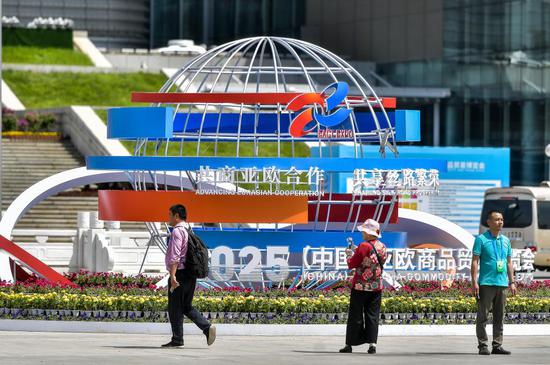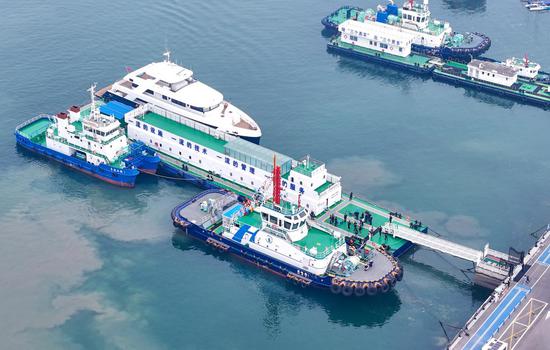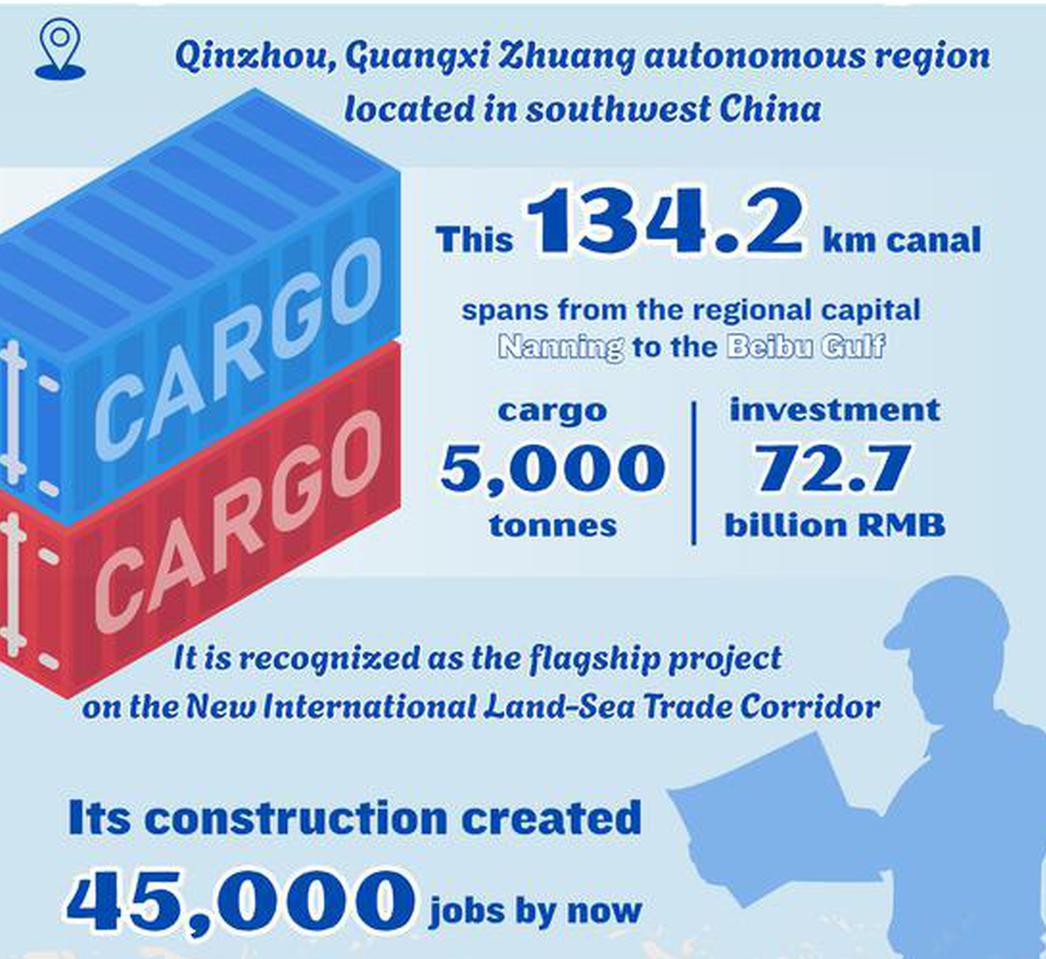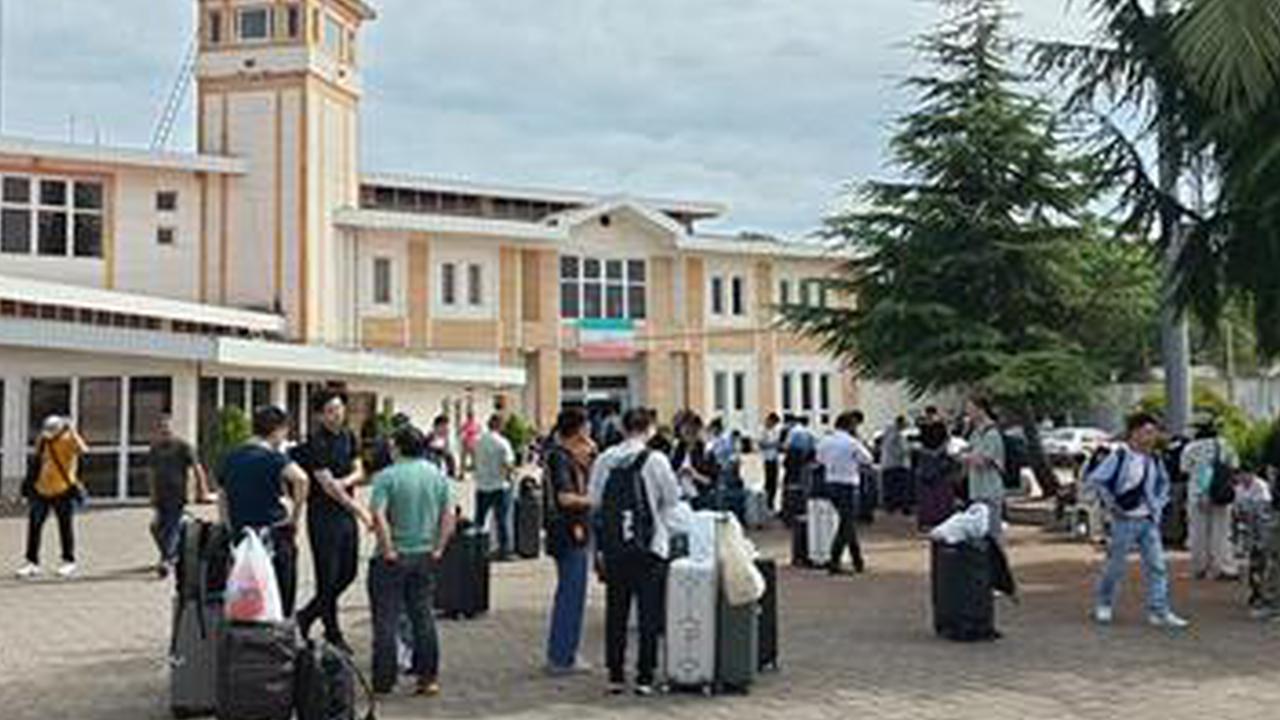From January to May, China's total social logistics value reached 138.7 trillion yuan ($19.1 trillion), up 5.3 percent year-on-year, according to data released by the China Federation of Logistics and Purchasing (CFLP) on Sunday. The sector remains broadly stable with a more optimized structure, marked by steady growth in industrial goods logistics and accelerating demand in consumer-related logistics.
In May, driven by industrial upgrading and policy support, logistics demand across most industrial sectors remained resilient. Equipment manufacturing contributed more than half of the growth in industrial logistics, leading structural improvements, CFLP said.
Logistics demand in sectors such as vehicle manufacturing, computers, communications and other electronic equipment rose by more than 10 percent. Policies promoting equipment renewal also notably boosted logistics volumes for motors, ships and related manufacturing.
Consumer logistics demand continued to accelerate. From January to May, logistics for goods related to individuals and households rose 6.4 percent year-on-year, up 0.5 percentage points from the first four months. In May alone, the growth rate reached 8.3 percent, 2.1 percentage points higher than in April, driven by trade-in policies for consumer goods and holiday spending, according to the CFLP.
New consumption models such as livestreaming e-commerce and on-demand retail are maturing, while e-commerce promotions and government subsidies have further boosted demand. During the same period, online retail sales of physical goods rose 6.3 percent year-on-year, up 0.5 percentage points from the rate for January to April.
The rapid growth in China's total logistics value reflects a profound structural transformation of the Chinese economy, driven by a sweeping wave of digitalization, Bian Yongzu, an executive deputy editor-in-chief of Modernization of Management magazine, told the Global Times on Sunday. This digital shift is not only reshaping consumer behaviors — such as online shopping, food delivery and ride-hailing — but is also deeply integrated into corporate operations, from product design and manufacturing to distribution, significantly boosting overall demand for logistics services.
He noted that government policies aimed at stabilizing growth and stimulating consumption — such as home appliance trade-ins — have also played a key role in driving short-term consumer enthusiasm. Combined with major promotional campaigns by e-commerce platforms, these measures have triggered a mini-consumption boom, leading to a concentrated surge in logistics demand.
China's import logistics structure is gradually shifting from traditional bulk commodities toward higher value-added industrial goods. From January to May, overall import logistics operations continued to decline due to external uncertainties, but structural divergences became become more pronounced. Logistics volumes for iron ore, coal and steel fell by 5.2 percent, 7.9 percent and 16.1 percent respectively, while imports of machine tools and integrated circuits rose by 25.1 percent and 8.4 percent respectively, highlighting the resilience in intermediate goods.
Moreover, green and renewable resource logistics saw coordinated growth, with demand along the new-energy industry chain continuing to strengthen. From January to May, logistics related to renewable resources rose 16.2 percent year-on-year, up 0.3 percentage points from the January-April period. In May alone, the growth rate stood at 13.3 percent. Meanwhile, logistics volume for the production of new-energy vehicles and automotive lithium-ion batteries surged by more than 30 percent year-on-year.
China's logistics industry generated 5.6 trillion yuan in revenue from January to May, up 4.2 percent year-on-year. The transport network remained stable, with structural upgrades and stronger cross-border air and rail capacity supporting smooth circulation.
In May, civil aviation cargo rose 16.6 percent year-on-year, with international air freight up 26.3 percent. China-Central Asia freight trains climbed 30.9 percent to 1,321 trips in May, while multimodal transport and the shift from road to rail for bulk goods continued to gain traction, the CFLP said.
From January to May, China handled 6.833 million 20-foot equivalent units of cargo via rail-water intermodal transport, up 18.4 percent year-on-year. By integrating transport modes and streamlining procedures, the sector has effectively reduced logistics costs and improved overall efficiency, it said.
Liu Yuhang, director of the China Logistics Information Center, said that the steadily increasing share of multimodal transport reflects the significant progress made in promoting such integration — a key driver in reducing overall logistics costs, according to China Media Group.
From January to May, major surveyed logistics enterprises reported a 6.5 percent year-on-year increase in business revenue. Profitability among logistics firms remained generally stable, with key operational indicators showing steady performance.
Expanded policy support for equipment upgrades and trade-in programs is expected to drive a continued recovery in logistics related to equipment manufacturing and consumer goods.
Bian pointed out that green industries have emerged as a powerful new force amid this digital transformation. "With technological advancements enabling digital management of waste classification, recycling, and transportation, resource efficiency has improved markedly. This has become a major driver of logistics growth and reflects a growing convergence between the green economy and the digital economy," he said.
China's total social logistics value surpassed 360 trillion yuan for the first time in 2024, with total annual logistics industry revenue reaching 13.8 trillion yuan. The country has maintained its position as the world's largest logistics market for nine consecutive years, according to a CFLP report released on Friday.


















































 京公網安備 11010202009201號
京公網安備 11010202009201號